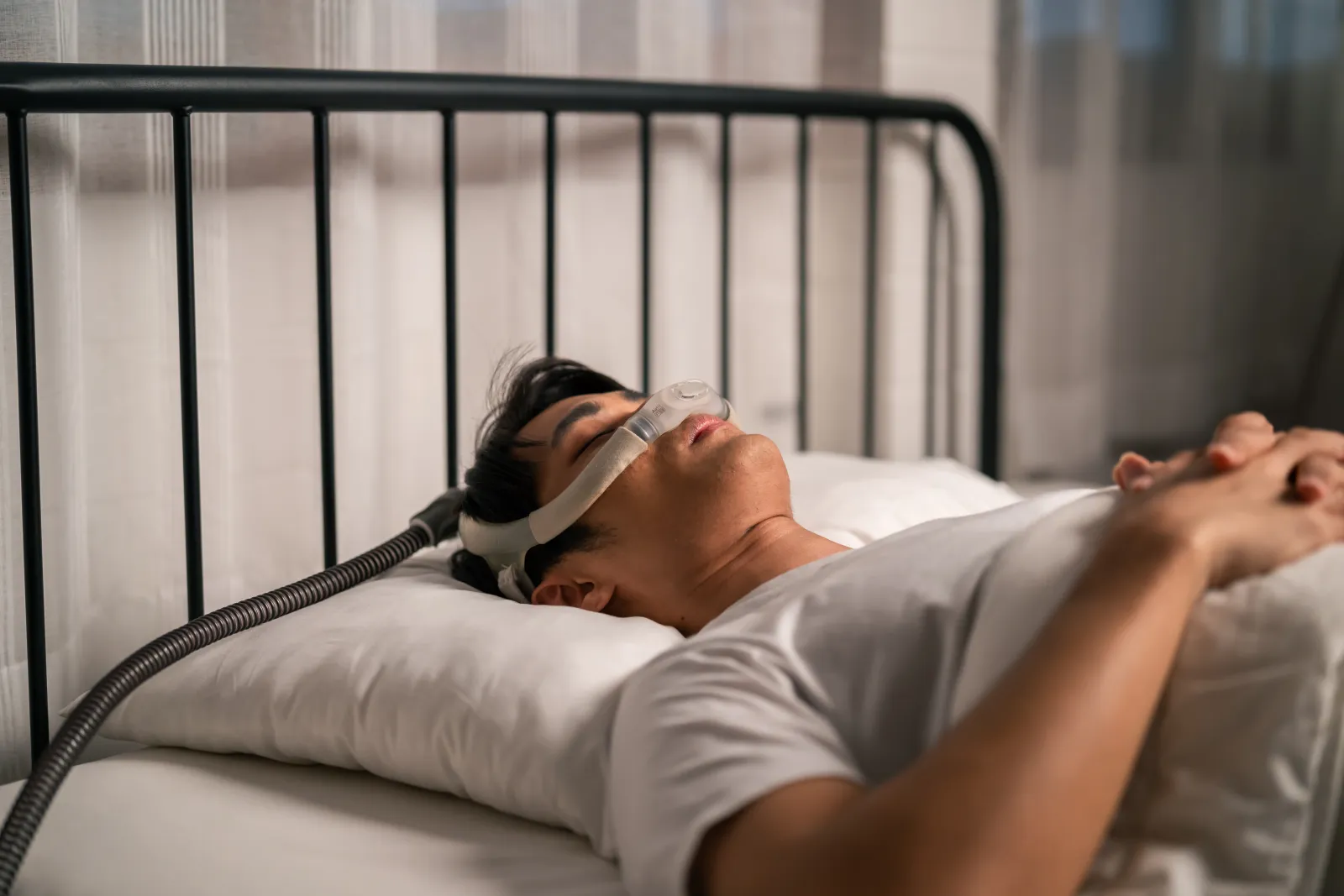- Identifying the risk factors obstructive sleep apnea can significantly improve treatment outcomes.
- Treatments such as obstructive sleep apnea tonsillectomy are effective for many patients.
- Understanding the differences between obstructive versus central sleep apnea is crucial for accurate diagnosis.

Sleep is necessary to maintain overall health which means that any disruptions can lead to significant health issues. Among these disruptions, obstructive sleep apnea (OSA) stands out due to its prevalence and impact. Understanding the risk factors obstructive sleep apnea and how it differs from other types, such as central sleep apnea, is crucial for effective diagnosis and treatment.
Sleep is a critical aspect of overall health, and any disruptions can lead to significant health issues. Among these disruptions, obstructive sleep apnea (OSA) stands out due to its prevalence and impact. OSA not only affects sleep quality but also poses serious risks to cardiovascular health and overall well-being. By addressing these factors early, individuals can significantly reduce their risk of developing severe complications and improve their overall quality of life.
Obstructive versus Central Sleep Apnea
Obstructive sleep apnea involves recurring instances where the upper airway is intermittently or entirely obstructed during sleep, causing reduced or completely stopped airflow. In contrast, central sleep apnea happens when the brain fails to send the appropriate signals to the muscles that control breathing. Recognizing the differences between obstructive versus central sleep apnea is essential for determining the right treatment approach.
While both conditions disrupt sleep and can lead to serious health issues, the treatments for each can differ significantly. For instance, obstructive sleep apnea tonsillectomy might be a viable solution for those with OSA but would not be appropriate for central sleep apnea.
Risk Factors Obstructive Sleep Apnea
Several factors increase the likelihood of developing OSA, including:
- Obesity: One of the primary risk factors for obstructive sleep apnea (OSA) is excess body weight. Fat accumulation around the upper airway can hinder normal breathing.
- Age: The likelihood of developing OSA increases with age, making it more prevalent among older adults.
- Gender: Men are at a higher risk of developing OSA compared to women.
- Family History: A genetic predisposition can play a significant role, with a family history of OSA elevating an individual's risk.
- Neck Circumference: Individuals with larger neck circumferences are more prone to airway constriction, which can lead to OSA.
- Airway Structure: Genetic or chronic conditions that result in a naturally narrow airway can increase the susceptibility to OSA.
Recognizing the factors that contribute to obstructive sleep apnea (OSA) is crucial in diagnosing and managing the condition.
Obesity and Obstructive Sleep Apnea
There is a well-established link between obesity and obstructive sleep apnea. Excess body fat, particularly around the upper airway, can impede airflow and cause OSA. For patients with obesity, weight loss is often a primary treatment strategy. Research indicates that even modest weight reduction can significantly lessen the severity of OSA symptoms.
Diagnosing Obstructive Sleep Apnea
To diagnose OSA, a sleep study is typically conducted. This can take place at a specialized sleep center or at home. These studies track various metrics such as airflow, blood oxygen levels, heart rate, and breathing patterns to ascertain the presence and severity of OSA.
Treatment Options
Several treatment options are available for OSA, ranging from lifestyle modifications to surgical procedures:
- Continuous Positive Airway Pressure (CPAP): A CPAP is the most common and effective treamtent that uses a mask to deliver a continuous stream of air, keeping the airway open during sleep.
- Lifestyle Changes: Weight loss, quitting smoking, avoiding alcohol, and adjusting sleep positions can all help mitigate OSA symptoms.
- Oral Appliances: These devices adjust the position of the jaw to maintain an open airway.
- Surgery: When other treatments are ineffective, surgical options like obstructive sleep apnea tonsillectomy and uvulopalatopharyngoplasty (UPPP) may be considered.
Understanding and addressing the risk factors obstructive sleep apnea is the first step in effective treatment and management.
Obstructive Sleep Apnea Tonsillectomy
One effective surgical treatment for OSA is obstructive sleep apnea tonsillectomy. This procedure involves removing the tonsils, which can be particularly beneficial for children and adults whose tonsils are causing airway obstruction. Tonsillectomy can significantly reduce the severity of OSA symptoms and improve the quality of sleep.
Importance of Seeking Treatment
Untreated OSA can lead to numerous health complications, including hypertension, cardiovascular disease, stroke, diabetes, and daytime fatigue, which can result in accidents and decreased quality of life.
Understanding the risk factors obstructive sleep apnea, the differences between obstructive versus central sleep apnea, and available treatments, such as obstructive sleep apnea tonsillectomy, is vital. If you or a loved one is experiencing symptoms of OSA, contact ENT of Georgia South.

